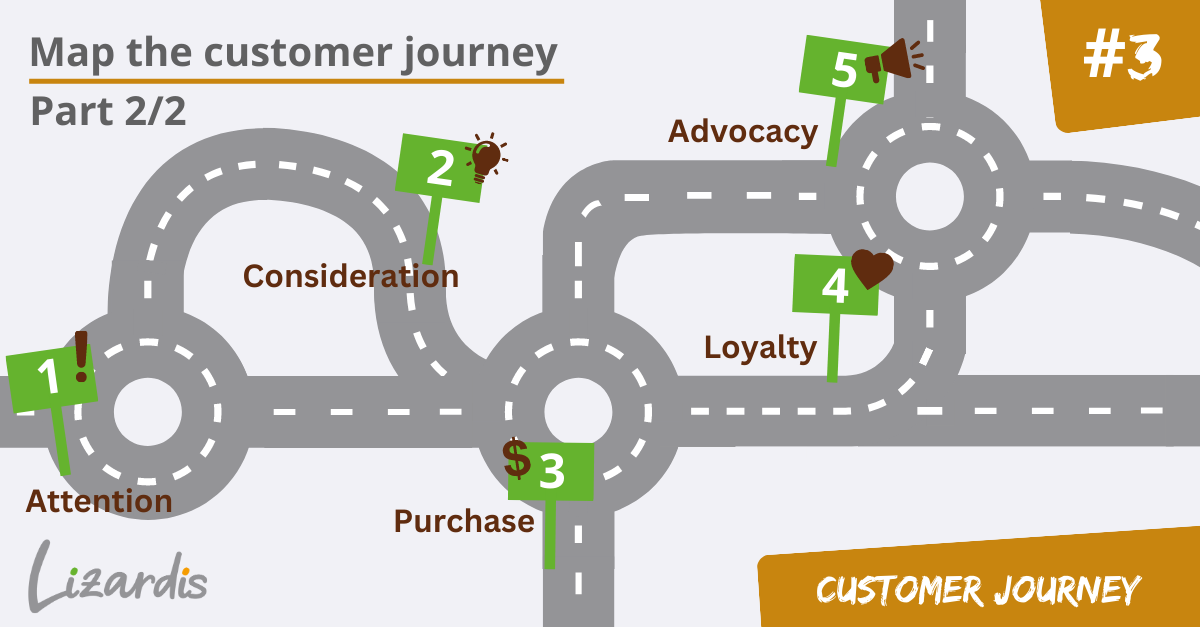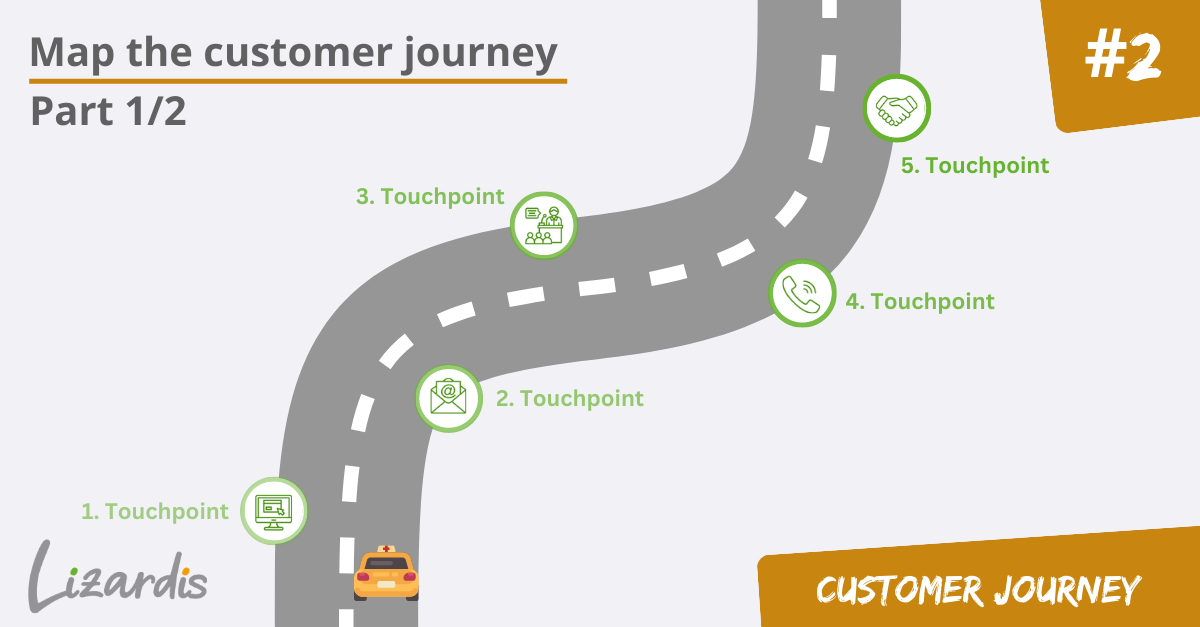Hannover, 11 April 2024
In the first two articles, we clarified what is meant by omnichannel management and what a life sciences company should consider when implementing such a strategy. In the final article of this three-part series, we will look at how to measure success, or lack thereof.
How can we measure the success of an omnichannel strategy and a customer-centric approach?
Once the personas and associated customer journeys are in place, regular reviews and adjustments are essential. However, because an expansion involves more soft factors, measuring success is a challenge. Standard KPIs often do not help. Questions about the frequency of contacts or the number of times certain messages were conveyed primarily help those performing the activities, such as salespeople, to achieve their goals, but not the customers.
Therefore, part of an omnichannel strategy is supposed to measure how well the customer’s needs have been met and how satisfied the customer is with that – i.e. less quantity and more quality of customer contact.
There are different approaches to this:
- Conversion Rate
A conversion rate indicates how often an HCP was successfully performed. This could be registering on the life sciences company’s website, registering for an event, or ordering dispensing cards for the doctor’s patients via a customer portal. By adding additional information to the collected data, such as whether the customer was referred to the website, event, or order option from an email or banner in the browser, you can gain additional data and identify which channels are working well and which should be optimized.
- Net Promoter Score (NPS)
The Net Promoter Score provides information on whether customers rate the life sciences company positively and would recommend it to other physicians. It also indicates if they tend to be passive or negative about the company. To determine this score, a customer is asked a single question: “Would you recommend our company?” The customer is given a scale of 0 to 10 as possible answers. Only answers 9 and 10 are considered positive, so these customers are classified as promoters. Answers of 7 and 8 classify the customer as passive, and customers who answer between 0 and 6 are considered detractors.
Among all customers surveyed, the company receives a score that can range from -100 to +100, as negative scores are subtracted from positive scores. However, NPS is also meaningful when looking at an individual customer, especially if the question is asked annually and the results are shown as a progression curve in the customer profile.

- Feedback
In addition to calculating the NPS, it makes sense to ask the HCP directly for feedback – on content, service quality, accessibility of contacts in the life sciences company, etc. The questions should be designed to capture quality, not just “yes” or “no” answers. The insights gained can also be supplemented with social media data. Reactions, likes, shared posts, comments, downloads, replies and retweets, link clicks, direct messages, phone calls, or even chat histories with employees or even chatbots paint a nuanced picture of what customers like and find helpful and what they do not. Recommendations such as “Customers who searched for this content also found this content interesting,” which we know from Amazon or Netflix, for example, can also be generated with the help of machine learning and AI and displayed to doctors. The collected and assignable reactions complete the picture of the customer.
- Customer Engagement Index
Social media data can also be used to calculate a customer engagement or loyalty index. Social media analytics is all about followers. However, this means little if customers are not interested in the content. This index therefore provides information on whether an HCP is interested in the social media content in relation to the entire target group. The index can be collected for a specific piece of content, a campaign, or for the life sciences company as a brand.
It is important to evaluate the different actions differently and to consider what value is attached to them. What is the value of liking a piece of content compared to sharing it? What is more important, a comment under a post or a question to the chatbot? Finding the right balance is certainly a challenge, but it is the only way to continuously improve the quality of content and services and strengthen customer loyalty to the life sciences company as part of the omnichannel strategy.
What makes a good closed-loop strategy?
As described above, the personas and the customer journeys based on them need to be regularly reviewed, supplemented or optimized. However, how can an organization learn from its mistakes and start improving content for all relevant channels with the least amount of effort? The answer: by not just outlining a closed-loop strategy in theory rather putting it into practice.
What exactly is a closed-loop strategy?
It is not only about developing and deploying content that fits the personas and is transferred to the customer journey, but also about collecting and evaluating feedback from customers and those who use the content in their customer outreach and drawing the right conclusions from the information.
Many companies in the life sciences industry still struggle with this last point. Often, feedback is collected, but the data is not analyzed or used to drive improvement activities. The more channels involved in the customer journey, the more complex this process becomes.
It is important to mark materials belonging to a customer journey or campaign to reflect content changes at all relevant points. This avoids the perception that the content is inconsistent. To do this, you need to develop a taxonomy of what materials should be called and how they should be marked to make it clear that they belong together. Developing and implementing a strategy for this is critical to the successful implementation and execution of omnichannel marketing.
Key Takeaways for Achieving Customer Centricity
What makes a good strategy for customer centricity with the help of omnichannel marketing?
Here is an overview of the most important findings:
- To achieve customer centricity through omnichannel marketing, life sciences companies must transparently involve important customers and key opinion leaders in the redesign of their organization. Consistent use of feedback is also crucial.
- To ensure customer interests are given the necessary attention, supplement quantitative key figures with those that evaluate or measure content or behavior-related data.
- Consistency in content for customers across all channels is crucial to maintain customer trust in the products and brand.
- During the transformation of the organization, a life sciences company must be aware that mistakes will be made. Mistakes should not be avoided at all costs , but rather recognized and addressed as early as possible to pave the way towards customer centricity. As the saying goes in agile project management, ‘fail, but fail early.’
How far along is your company in implementing an omnichannel strategy?
Have you taken any initial steps, such as a pilot project?
You want more insights?
Check out our other blog articles about customer engagement!
Omnichannel-Management: From product centricity to customer centricity (1/3)
Omnichannel marketing enables the shift from product centricity to customer centricity. Learn more about how it differs from other concepts.
Mapping Life Sciences Customers in the Customer Journey (2/2)
The ideal-typical course of the Customer Journey with phases 1 to 5 not always realistic. Also consider alternative paths that your HPCs follow.
Mapping Life Sciences Customers in the Customer Journey (1/2)
Get to know your customers better by developing customer journey maps for different personas to improve customer engagement.
The Customer Journey in Life Sciences: Taking the customer on a journey – what does that mean?
Develop your contacts along the customer journey into sustainable customers. In our article, we tell you what to look out for in the life sciences environment.






